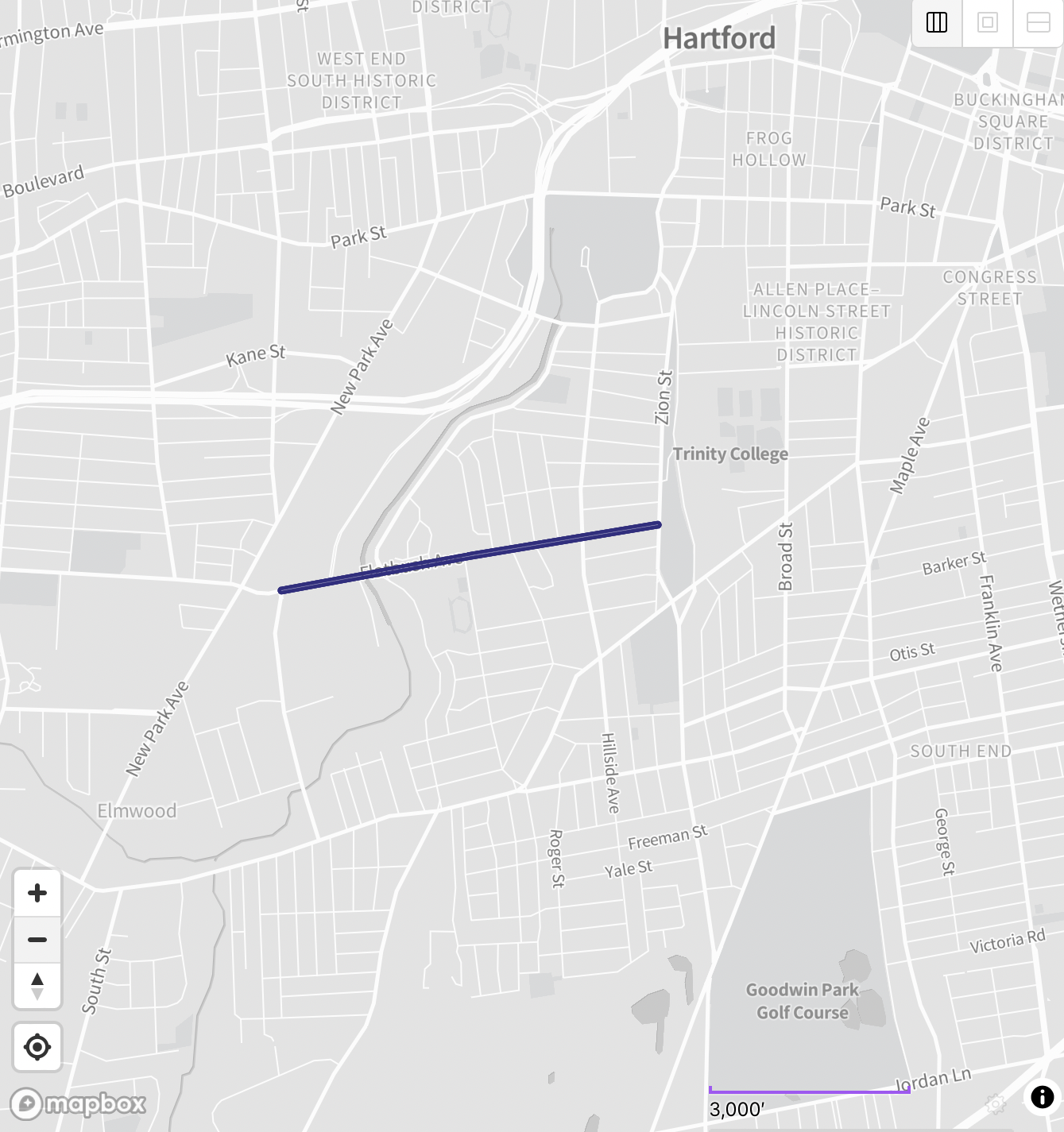Introduction
In September of 2020, the city of Hartford installed speed humps on Flatbush Avenue (see Figure 1), a corridor located a street over from Trinity College, in an attempt to reduce the number of crashes that were frequently occurring on the street. Speed humps are large, wide raised surfaces in roadways. They are a cost-effective traffic-calming measure that aims to slow down drivers, reduce the speed they are going, and consequently, reduce the number of crashes from high speed collisions. Local governments, like the city of Hartford, intentionally installed these humps in hopes that drivers would be more cautious when driving and make the city's streets more safe. This research was conducted to see the effectiveness of the speed humps and whether or not more should be installed on other busy streets in Hartford. These traffic-calming humps were also installed on other major streets surrounding Trinity College, including Summit Street, Allen Place, and Wethersfield Avenue.

Figure 1: Picture of speed hump at 161 Flatbush Avenue, Hartford CT
We’ve chosen to analyze the speed humps on Flatbush Avenue due to the fact that they were installed the earliest, and therefore have the most data available. With Trinity being located in such a busy area, the safety and well-being of the students was also another push for installation of the humps, especially after the tragic death of a fellow student in March of 2022. Last March, a young girl and her two friends were struck by a fast-moving car on New Britain Avenue. Following the crash, the city also installed white bollards, a different type of traffic-calming measure, on New Britain Ave in an attempt to reduce the high number of crashes that had been occuring.
Currently, there is data on crashes that have occurred on Flatbush Avenue for up to 2 years before and after the installation, and the results are extremely helpful to the city of Hartford. Because the city of Hartford wants what is best for its people, it is important to ask the question, did crashes change after traffic-calming speed humps were installed on Flatbush Ave? To further determine short-term and long-term effectiveness, we will be analyzing this data from two different date ranges: 1 year pre and post speed hump installation, and 2 years pre and post speed hump installation.
